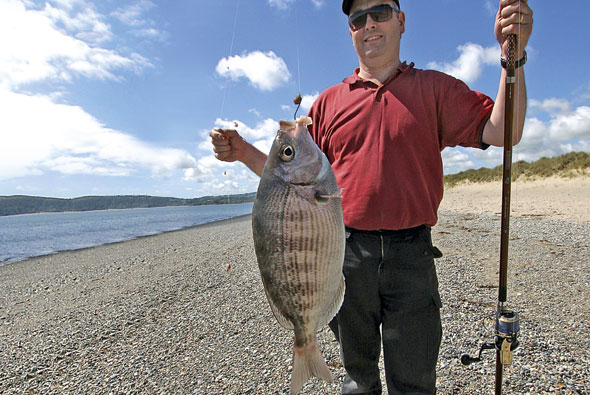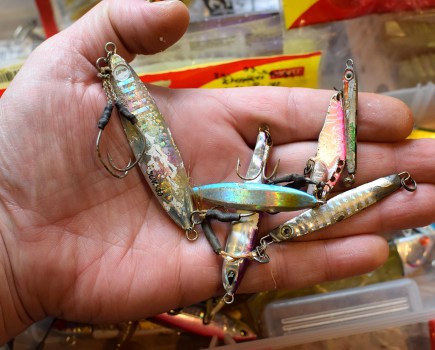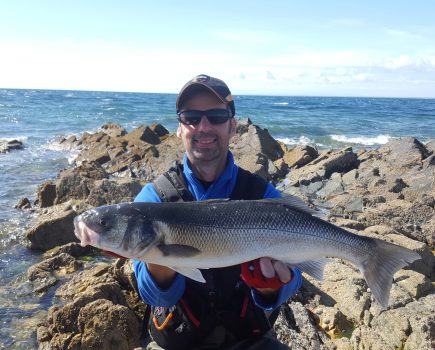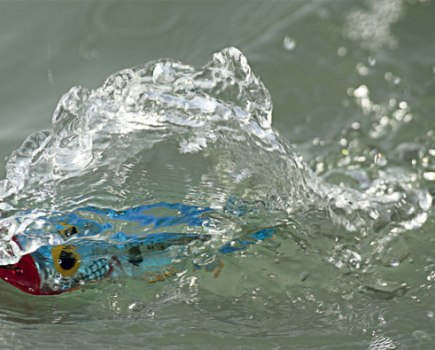Black bream won’t ever test standard beach gear, but they are in a class of their own on light tackle.
Not only are they a challenge to catch, but they are very special in terms of looks and angling kudos. And they taste delicious.
A sub-tropical summer species, their ability to remove a hookbait in seconds, their hard to hook, rat-a-tat-tat bites and their powerful jagging runs put them way above summer pouting, flounders and dogfish when it comes to fun.
The odd specimen will be hooked on standard or heavy sea gear, but it is anglers who lighten up their mainline and snoods who get the most enjoyment from this spunky fighter.
The best tackle set-up for bream is a light fixed-spool beachcaster of around 12-15ft long and a reel loaded with 8-12lb mono or similar diameter braid.
The longer, lighter rod allows extended terminal rigs to be used, and the baits can then be lifted and moved enticingly. I am not saying bream can see the line or hooks on a heavier outfit, but it is obvious that the lighter outfit, allowing a more natural behaviour of baits, will bring more bites.
WHERE TO CATCH THEM
Black bream are not common in all areas, but like a few other summer visitors the species has expanded its numbers and range in recent years and has made something of a comeback. Perhaps the demise of several of our prime species due to commercial fishing has given the black bream more room and far fewer predators.
The South West and the western end of the English Channel have always been black bream country, but, like many of the tropical and sub-tropical species that visit our shores each year, they are spreading.
Bream are a fish of the rocky reef and often shoal offshore around such marks, venturing close to shore on all types of sea bed after dark.
A localised species, like the wrasse, bream tend to take up residence on rock and mixed-ground marks and rarely move during summer except for those night time trips inshore. This means that bream marks are fairly well known and are not difficult to discover. Ask coastal tackle dealers, because they know where the bream can be found.
BAITING YOUR HOOK FOR BREAM
Bream are not fussy when it comes to food and will take lots of different baits. Fish, crabs and worms are among their favourites, but your bait must be neat and its presentation perfect.
Bream have a small mouth and a fine set of teeth that can nibble, nip and remove bait from a hook with surgical precision. Rapid-fire bites often result in a bare hook and a missed fish. The simple answer is small or compact and deliberate hookbaits without worm tails and parts hanging off for these fish to nip and pull.
Being a shoal fish they compete with each other, and this is why you get darting-type strikes at the bait. After dark the shoals become hyperactive and it will pay to have a second rig baited up and ready to go to increase your chances of catching.
A small cube of fresh mackerel sewn around the bend of the hook is a classic bream bait. Alternatively, half a peeler lashed close around the hook with bait elastic catches in some regions, as does a ragworm and a tiny sliver of squid.
A few peeled crab legs/claws or the soft abdomen of the hermit crab are other favourites.
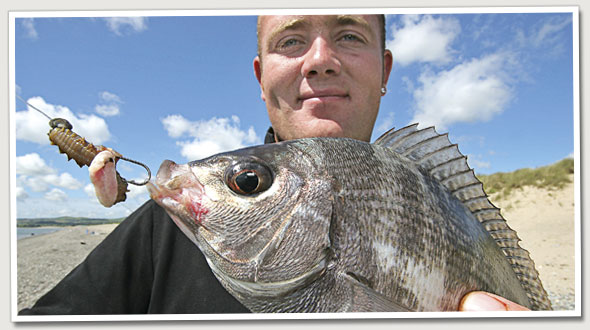
TERMINAL RIGS FOR BREAM
Light line and small hooks hold the key to success
Your terminal rigs must be light, and many anglers prefer a simple light-line paternoster with a long body and snoods. Modern fluorocarbon lines are popular when a strong, light snood line is required.
A light rig allows the baits to sink and flutter in the tide. Movement of the rod tip and bait is a good method to get the bream to attack the bait with more urgency.
The addition of floating beads or poly balls enhances movement and is also a very worthwhile summer ploy in clear water to catch many of the other species, such as mackerel, garfish, pollack and mullet.
A plain or wired grip lead weight allows tackle and baits to react differently to any rod movement. A grip weight will stay still, allowing the bait to flutter in the tide, while a plain sinker will hop off the sea bed, producing plumes of sand. Both tactics are worth trying.
Small hooks are essential, with size 2 the largest you will need and sizes 4 and 6 the more popular choices.
The strongest small hooks are patterns designed for carp fishing, and they are ideal should you accidentally hook a larger species.
BEST RIG DIMENSIONS
These can vary, but with a longer rod it is easier to use a rig over 6ft long. The longer the rig body, the longer your snoods can be and the higher the baits can be fished off the sea bed. Distance casting is rarely required, so flapper rigs are the norm.
By using an 8ft rig body of 30lb line, two or three long 10lb snoods can be placed well apart so they do not tangle.
Popular hook configurations are two-up, one-down styles with the lower hook fished hard on the sea bed and the upper two off the bottom. The two-up rig is perfect, with swivels, crimps and clips kept to a minimum and the smallest hook patterns increasing the movement of the baits.
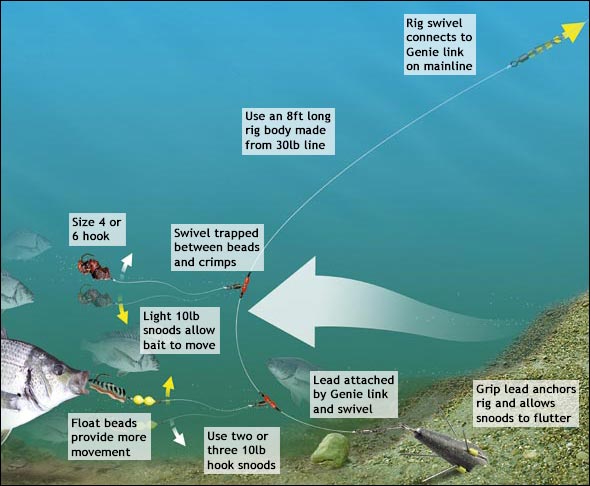
Even more top bream
There are several species of bream in British waters, but only the black and red types are common. Others include Couch’s, rays, bogue, pandora, dentex and pagre.
– The previously rare gilt-head is increasingly common as far up the English Channel as the Isle of Wight, and this species grows large and is a powerful fighter. The British record is 10lb-plus. Let’s hope the species expansion continues.
– Like the wrasse, the bream (Sparidae family) are hermaphrodite, changing sex to suit population demands.
– Bream are an increasingly common target for boat anglers and here, too, the light tackle approach is best.

